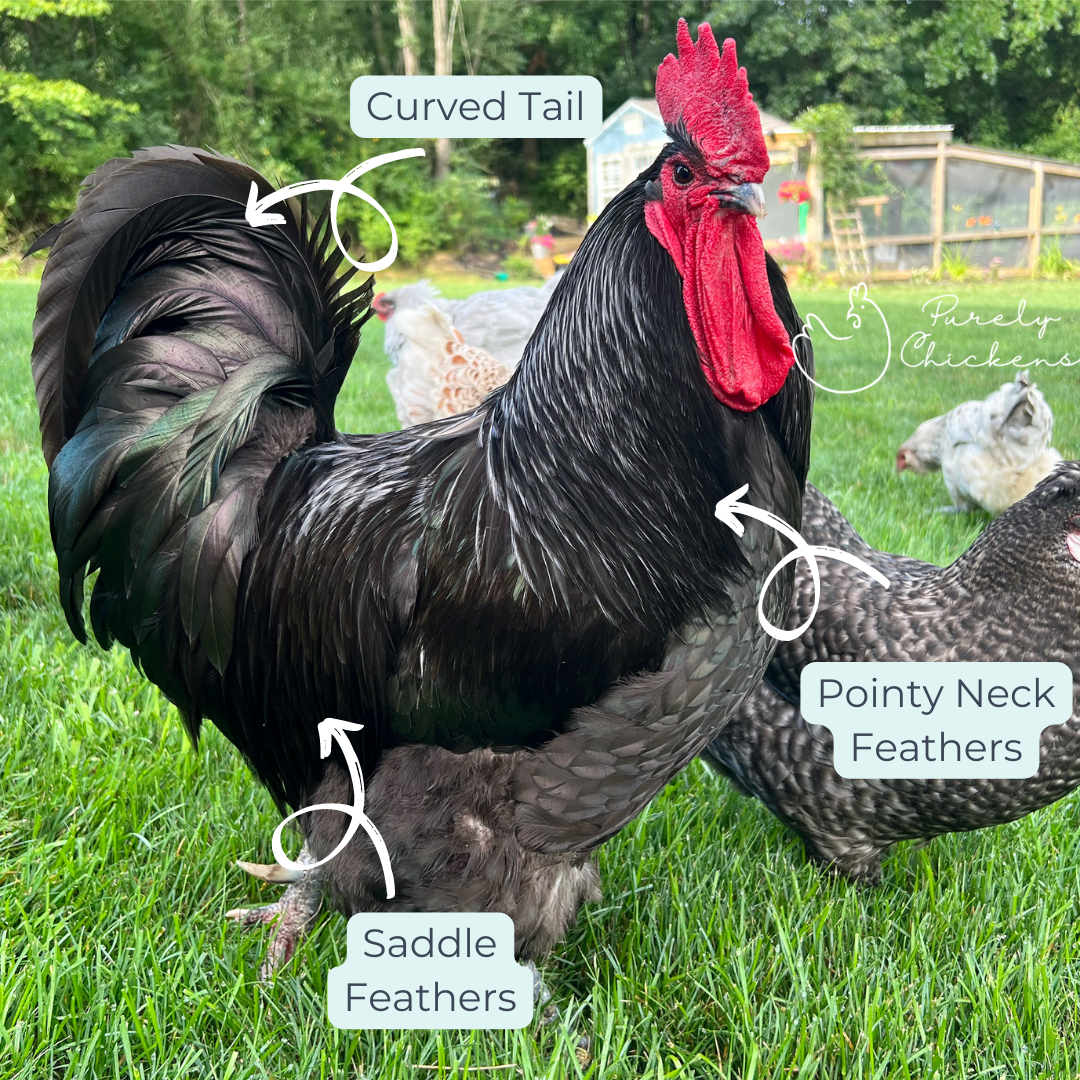Rooster or Hen?!
Do I have a rooster or a hen?! It’s one of the most asked questions. I love a good game of roo or hen but it isn’t always that easy to tell. You can purchase chicks as straight run (mixed sexes), males, or females (pullets). If you hatch eggs at home, they will be straight run because you can not determine the sex while the chicks are in the eggs. Let me tell you a few things to look for.
Let’s start with babies. When a chick first hatches from its egg, a trained professional can vent sex the chick when it is one day old. It is not an easy (or clean) job and I advise against doing this technique unless you have proper training. I purchase my chicks from a hatchery with trained professionals and even then, mistakes happen. It involves turning the chick upside down and pressing on the vent area to expel fecal matter and then observing the organs that appear. Harm can be done to the chick if not done properly and it takes a very trained eye…so let’s move on to the next option.
Feather sexing is a technique that many swear by but I will tell you, it has a very poor accuracy rate because it doesn’t work for all breeds. You spread the wings out and look for the curvature pattern. Males are said to have on curve and females a curve that goes in a bit.
Being that those two options are not great for backyard chicken keepers, let’s talk about the signs of a rooster and when you can accurately spot them.
Combs and Wattles
Roosters generally have larger combs and wattles. While the chicks are young, you may notice that a few of your baby chicks start to develop large combs and wattles while others stay small. This is an indicator that you MIGHT have a rooster but not a for sure. I have had hens that develop combs and wattles early and I could have sworn they were roosters but I was wrong. If you have chicks who are all different breeds, this is not a great way to tell if you have a rooster because different breeds also develop at different rates. If you have a group of chicks who are all the same breed and same age, it might be easier but still not a sure thing. There are about nine types of combs as well. Some chickens get large single combs that stand up and others have pea combs that lay flat. With nine types of combs, you really have to know what to look for!
Mike and Gale side by side. Same age same breed.
Spurs
It is true, roosters will grow spurs and hens usually won’t. But, most chicks, no matter the sex, will show little nubs on their legs where spurs could grow. By the time the spurs actually start to develop, you’ll already know it is a rooster so spur nubs are not a great factor to pay attention
Feathers
Roosters and hens have very distinct feather patterns (most breeds anyway). I can usually tell a rooster from a hen based on feathers alone by the time they are 12-15 weeks. Roosters have pointy neck feathers and curved tail feathers. They also have saddle feathers. Some breeds get various color patterns that appear on their wings and necks. Big Mike is all black so he doesn’t have the different color patterns but you can see in the image below that this grey chicken had some brown popping up! That is about the time I started looking for his new home. Feather patterns start to emerge in the teen weeks for most chickens, but just like people, chickens develop at different rates. I encourage you to look up the specific breeds and compare roosters and hens. While they all may look like hens at first, those feathers could start changing in the teen weeks.
Side by side of a hen and a rooster full grown. Both are Orpingtons.
Here are some younger roos that were showing signs long before maturation. CAN YOU SPOT THE SIGNS?
As you have read, it is difficult to tell a rooster from a hen at any stage. Thats why we say in the chicken world….










